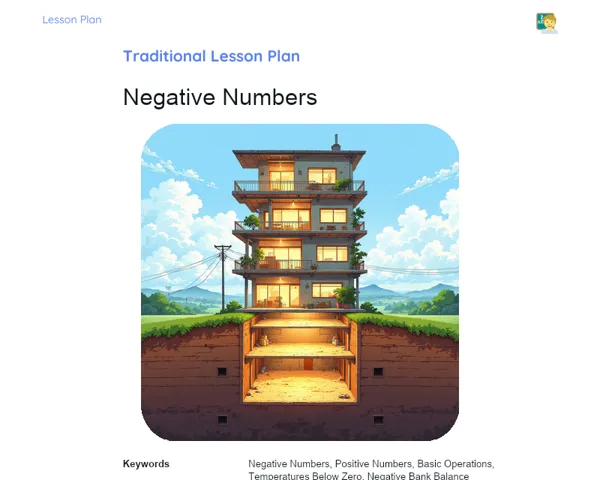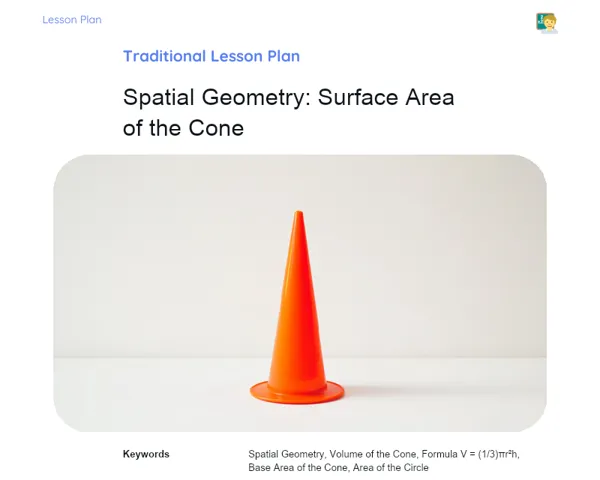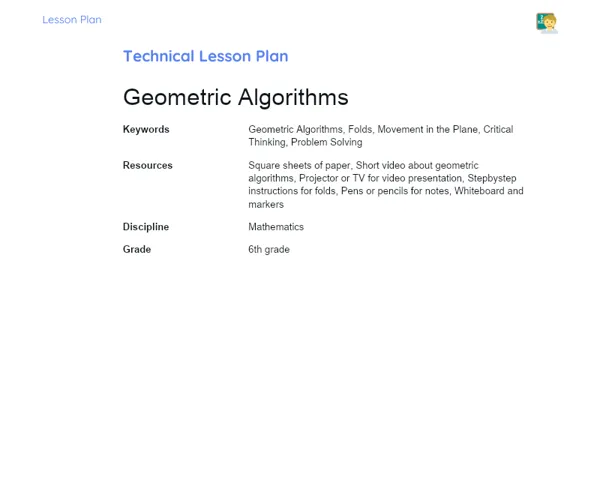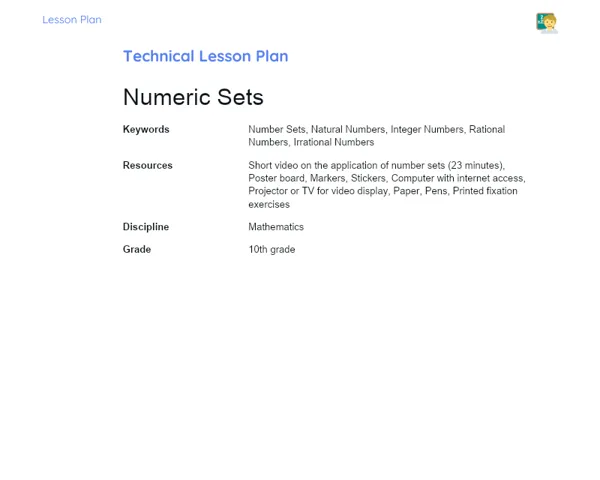Lesson Plan | Lesson Plan Iteratif Teachy | Graphics: Bars and Columns
| Keywords | Bar Charts, Column Charts, Chart Components, Data Interpretation, Social Media, Statistics, Data Analysis, Digital Tools, Student Autonomy, Critical Thinking, E-commerce, Sports Performance |
| Resources | Phones, Computers with internet access, Instagram accounts (public or shared for educational purposes), Digital chart creation tools (Google Sheets, Excel), Access to popular online stores, Access to sports statistics websites |
| Codes | - |
| Grade | 6th grade |
| Discipline | Mathematics |
Goal
Duration: 10 - 15 minutes
This part of the lesson plan is designed to outline the specific objectives that learners should achieve throughout the lesson, helping both the teacher and learners keep their eye on the ball regarding essential skills to be developed, ensuring a solid grasp of the topic at hand.
Goal Utama:
1. Identify the key components of a bar or column chart, including title, axes, legends, sources, and dates.
2. Analyse data displayed in a bar or column chart.
Goal Sekunder:
- Encourage learners to develop critical thinking and analytical skills.
- Foster learners' independence in interpreting visual data contextually.
Introduction
Duration: 15 - 20 minutes
The aim here is to contextualize the theme of bar and column charts, sparking learner interest and encouraging their curiosity through active information-seeking. Additionally, the key questions are intended to initiate a discussion that reinforces learners' prior knowledge and sets them up for practical activities, deepening their understanding of the significance and application of these charts in everyday scenarios.
Warming Up
To kick things off, explain to the learners that bar and column charts are commonly used to visually display data, making complex information easier to understand. Suggest they take a moment to search for an interesting fact about bar or column charts on their phones, such as their application in statistical surveys, market research, or even comparing sports performances. Encourage them to share their discoveries with the class.
Initial Thoughts
1. What are the main components of a bar or column chart?
2. Why are bar and column charts effective for representing data?
3. Where in everyday life have you seen or could imagine seeing bar or column charts used?
4. What factors might affect how we interpret data in a bar or column chart?
5. How can we use bar or column charts to compare different datasets?
Development
Duration: 70 - 80 minutes
The objective of this stage of the lesson plan is to offer a practical and relevant learning experience where learners can apply the knowledge they have acquired concerning bar and column charts in real and relatable situations in their daily lives. The activities are designed to engage learners through the use of technology and topics they are interested in, promoting autonomy, critical thinking, and analytical skills.
Activity Suggestions
Activity Recommendations
Activity 1 - Unboxing Instagram 📊
> Duration: 60 - 70 minutes
- Goal: Use real-world data to create bar or column charts while recognising and interpreting their key components, connecting the learning experience to learners' digital environments.
- Deskripsi Activity: Learners will generate bar or column charts using statistics from their own Instagram accounts. They should assess metrics like likes, Story views, and post interactions to craft a chart that tracks their engagement over time.
- Instructions:
-
Form groups of up to 5 learners.
-
Each group must choose an Instagram account from one of its members (the account must be public or shared with the group for educational purposes).
-
Using a phone, check the metrics of a particular Instagram post (like count, comments, video views, etc.).
-
With the data gathered, use a digital chart creation tool like Google Sheets or Excel.
-
Create a bar or column chart that visualizes the collected data.
-
Include essential components in the chart: title, axes, legends, sources, and dates.
-
Each group must then present its chart to the class, explaining the data and their conclusions regarding social media engagement.
Activity 2 - Venturing into the Virtual Market 🚦
> Duration: 60 - 70 minutes
- Goal: Cultivate the ability to analyze real market data and foster the creation and interpretation of bar or column charts, while linking learning to e-commerce and digital consumption.
- Deskripsi Activity: Learners will simulate a digital market research, gathering data on product preferences from online stores. They will select a product type (like electronics, clothing, or toys) and compare reviews and sales across various brands or models.
- Instructions:
-
Form groups of up to 5 learners.
-
Each group should select a product type to explore (for instance, smartphones, shoes, or books).
-
Using a phone or computer, access popular online retail platforms and collect data on product reviews and sales (like star ratings, review counts, quantity sold).
-
With the collected information, utilize a digital chart creation tool such as Google Sheets or Excel.
-
Create a bar or column chart that represents the collected data.
-
Incorporate the essential components in the chart: title, axes, legends, sources, and dates.
-
Each group must present their chart to the class, explaining the data and their conclusions about market preferences and product quality.
Activity 3 - Sport Stats Explorers ⚽️
> Duration: 60 - 70 minutes
- Goal: Merge learners' love of sports with data analysis, encouraging the creativity and understanding of bar or column charts while connecting learning to sports statistics.
- Deskripsi Activity: Learners will formulate bar or column charts using sports statistics, such as goals, assists, or match wins by football teams. They will research and compare the performance metrics of various players or teams over a season.
- Instructions:
-
Organise learners into groups of up to 5.
-
Each group must choose a sport and a data category to analyze (for example, goals scored by players in a football league).
-
Using a phone or computer, access sports statistics websites to gather relevant data.
-
Utilize digital chart creation tools like Google Sheets or Excel with the data gathered.
-
Create a bar or column chart reflecting the collected data.
-
Ensure that essential components are added to the chart: title, axes, legends, sources, and dates.
-
Each group will present their chart to the class, discussing the data and their takeaways regarding the sports performance analyzed.
Feedback
Duration: 20 - 25 minutes
This stage aims to solidify learning through reflection and sharing experiences, cultivating a collaborative atmosphere and mutual support. Constructive peer feedback nurtures self-reflection and the capacity to accept and adopt suggestions, enhancing comprehension of the content and bolstering interpersonal skills.
Group Discussion
Facilitate a group discussion where all learners share what they have learned from the activities and the insights they gathered. Encourage each group to highlight a key aspect of their chart that they found either challenging, interesting, or eye-opening during the preparation. Prompt learners to comment on the similarities and disparities between the charts presented and how each group interpreted the data collected. In closing, raise questions about how these charts can be applied in real-life scenarios and how they aid in making informed decisions.
Reflections
1. What were the main challenges faced while creating and interpreting the charts? 2. How did the chart components (titles, axes, legends, etc.) help or complicate data interpretation? 3. In what ways might the analysis of charts influence decision-making in real contexts, like on social media, in online shopping, or in sports?
Feedback 360º
Guide the class in conducting a 360° feedback session, where each learner should earn feedback from their group members. Encourage a culture of giving constructive and respectful feedback, focusing on one positive element of each peer's work and suggesting an area for growth. Stress the importance of considering others' viewpoints to strengthen data analysis and information presentation skills.
Conclusion
Duration: 10 - 15 minutes
🎯 Conclusion Purpose 🎯
This closing stage aims to reinforce the learnings from the lesson, connecting them to daily life and the digital environment we inhabit. By reflecting on the activities and discussions, learners cement their understanding and appreciate the practical relevance of charts in their lives, fostering meaningful and lasting learning.
Summary
🎉 Lesson Wrap-Up: Navigating Charts 🎉
Today, we embarked on an exciting adventure through the realm of Bar and Column Charts! We examined the components of these charts, including titles, axes, legends, and data sources. Our intrepid digital explorers dived into Instagram stats, delved into product preferences online, and scrutinized sports performance, transforming numbers and complex data into clear and powerful visual representations. 🚀📈
World
🌍 Link to the Modern Landscape 🌍
Bar and column charts are indispensable tools in today's digital landscape. They can be found in everything from reports on social media to essential business decisions and sports analyses. The skill to create and interpret these charts empowers learners to comprehend and engage with the contemporary world, where data reign supreme and visual information is crucial. 💡📊
Applications
📅 Real-Life Applications 📅
Grasping and manipulating bar and column charts is a vital skill in everyday life. These abilities find applications across many areas, including investment planning, sports performance analysis, market research interpretation, and even managing one's social media presence. The capacity to visualize data facilitates informed and strategic decision-making. 💼🔍



